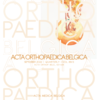Total cementless unconstrained hip arthroplasty in Crowe type IV hip dysplasia with subtrochentric derotation osteotomy
hip dysplasia; derotation osteotomy; subtrochentric osteotomy; cementless hip; hip dysplasia; derotation osteotomy
Published online: Jan 20 2023
Abstract
Developmental hip dysplasia is a common cause for secondary osteoarthritis and in the past it was considered impossible to do hip arthroplasty surgery for this group of patients. We aim at introducing our results and arthroplasty technique in management of such technically demanding and challenging cases. 22 patients with 25 hips suffer from hip dysplasia Crowe type IV were operated by total cementless unconstrained hip arthroplasty with subtrochentric derotation osteotomy without fixation of osteotomy site, The mean age group was 37.9. All patients were operated through lateral approach. The acetabular component is located in the true acetabulum. Postoperatively the patient can weight bear fully unaided within 3 months. The preoperative limb length discrepancy improved from a mean 46.36 mm to 7.3 mm. One case of stem subsidence occurred and underwent revision to cemented stem 1years later. The Harris hip score improved to 85.9 at end of follow up in comparison to38.09 preoperatively. The osteotomy site healed within 5.1months in average .No cases of osteotomy non union occurred. The mean follow up was 28.3 months. We concluded that hip arthroplasty in patients with hip dysplasia Crowe type IV is technically demanding surgery. Recreation of normal biomechanics and anatomy through implantation of acetabular component in the true acetabulum and femoral shortening and derotation offers the patient painless and adequately functioning hip
